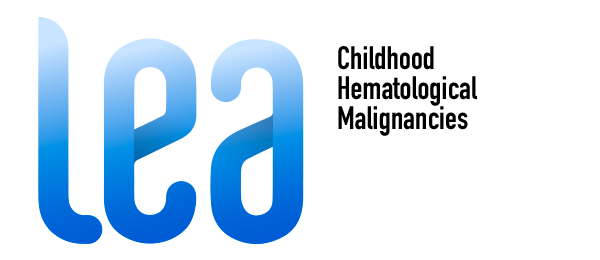Over the past 40 years, regular therapeutic advances have transformed the prognosis of children and adolescents with cancer, especially in hematological malignancies (more than 80% of cures compared to 40% in the 1970s). However the disease itself, the intensity of the therapies, the difficulties of the journey, expose to late side effects that can affect the state of health, the quality of life and the social integration of individuals, long after the end of the treatments.
To improve knowledge about life after pediatric cancer and help develop more appropriate early detection and treatment strategies, there is a need to better understand the incidence and the various risk factors of these late side effects.
Thus, the objective of the LEA program “Leukemia and other malignant hemopathies in Children and Adolescents” is to describe and understand, through prolonged follow-up, the medium and long-term fate of patients treated for malignant hemopathy during their childhood, taking into account different aspects of their state of health (physical health, quality of life of the individual and those around him, social integration and relations with the healthcare system).
Organisation
The program initiated in 2004 is based on the constitution of an open multicenter cohort, both historical and prospective.
It is offered in centers participating in the LEA program to all patients treated for childhood hematologic malignancy, based on the following inclusion criteria:
- age less than 18 years at the time of diagnosis;
- diagnosis of acute leukemia, Hodgkin’s lymphoma, lymphoblastic lymphoma, or other malignant blood disease treated with hematopoietic stem cell transplantation;
- diagnosis from January 1, 1980;
- treatment of malignant hemopathy (chemotherapy or transplant) carried out in one of the pediatric cancer centers participating in the LEA program Teams involved – Lea (plateforme-lea.fr);
- resident in France;
- affiliated or beneficiary of a Social Security scheme.
For each patient, the date of entry into the cohort is the date of diagnosis of hematologic malignancy.
Clinical and paraclinical information enabling the detection of sequelae is collected during specific follow-up medical consultations, to which patients are regularly invited. At the same time, self-surveys are also offered to the patient and/or their parents (depending on their age) in order to document socio-demographic and quality of life data.
Follow-up assessments generally begin one year after the end of the initial treatment phase for patients who have not relapsed.
They are repeated every two or four years depending on the patient’s age, the distance from the diagnosis and the risk profile for sequelae (type of malignant hemopathy, treatments received, etc.).
Collected informations
Datas are collected during dedicated medical consultations (with prescription of additional examinations if necessary) and on self-surveys. They can be grouped into four points:
- information on the initial disease and its treatments: type of malignant hemopathy, age at diagnosis, detailed therapeutic history, possible relapses, etc. This information makes it possible to define for each patient the risk of late complications and to guide the paraclinical examinations necessary to detect these potential complications;
- clinical examination and possible organic sequelae exploring 14 functional modules: height growth, weight growth, puberty, fertility, thyroid, cardiac function, visual function, secondary tumors, viral contaminations, lung function, bone metabolism, iron metabolism, metabolic syndrome, other sequelae (diabetes, osteonecrosis, chronic kidney failure, alopecia, hearing loss, etc.);
- datas on education, professional integration, quality of life of subjects and of their parents (when the subject is still a minor);
- datas on the patient’s relationship with the healthcare system (access to healthcare and satisfaction).
Collection and conservation of biological samples
Improving knowledge about genetic susceptibility to the late side effects of treatments is a promising approach, both to develop targeted prevention and to improve the quality of life of individuals.
Since the end of 2018, a biological collection associated with the LEA cohort is being built (CRYOLEA project, carried out in collaboration with CRYOSTEM), with the ambition to have a biological collection from at least 2,000 patients.
The main objective is the identification of genetic factors associated with the occurrence of 4 side effects identified in LEA as particularly serious, because they put the life of the subject at risk or are likely to significantly affect his quality of life: metabolic syndrome, anthracycline cardiomyopathy, second cancers and symptomatic osteonecrosis.
A blood sample is offered to each patient during the LEA consultation. This sample is sent to the Biological Resources Centre affiliated to CRYOSTEM, on which the clinical department receiving the patient depends. For some patients treated by allograft of hematopoietic stem cells, whose peripheral blood cells originate from the graft and are therefore of donor type, a skin biopsy is proposed for culture and freezing of fibroblasts. This biopsy is transmitted to the service of Prof. SOULIER at Hospital St LOUIS (Paris) which ensures the isolation of fibroblasts, their culture, freezing and storage.
Don’t hesitate to listen our podcasts (in french) here.



